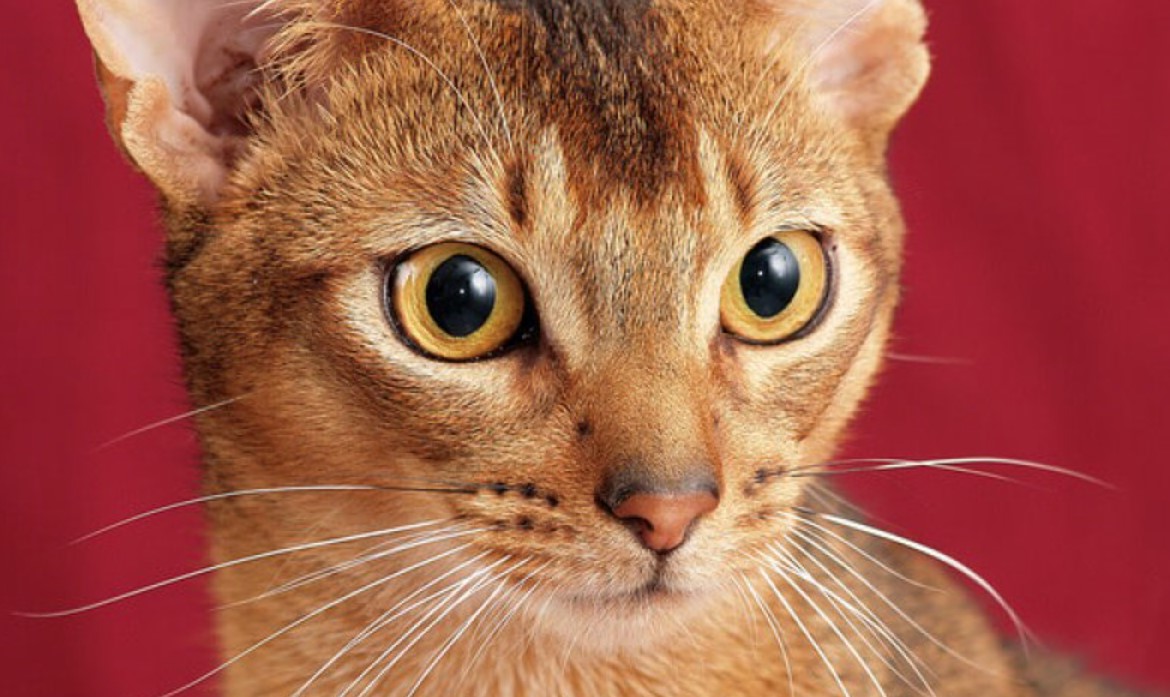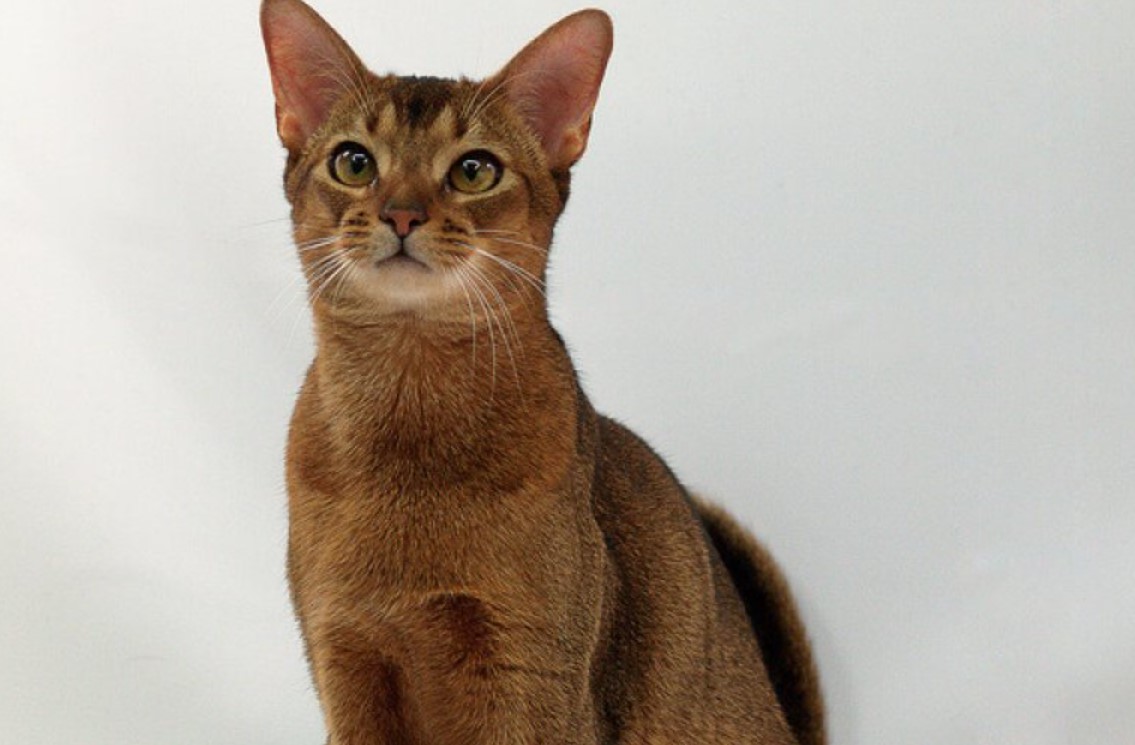The Abyssinian cat is a true little diva. Their appearance resembles that of a puma, complete with lynx ears. The Abyssinian is definitely not a lap cat, because she loves to jump, stray, and discover the world. Nevertheless, she acts closely with her reference person and knows how to wrap her around her finger very cleverly.
Size: Medium
Weight: cat/ tomcat 2.5- 4 kg / 3.5- 5 kg
Life expectancy: 14-16 years
Physique: Very lean and muscular
Coat colors: Blue, Sorrel, Fawn plus silver variants
Peculiarities in the Appearance “Ticking” of the hair, a hair has up to 4 different colors
Breed type: shorthair breeds
Country of origin: Southeast Asia
Recognized cat breed by Fife, TICA, CFA
Typical breed diseases: pyruvate kinase deficiency, renal amyloidosis, retinal atrophy, luxating patella
Breed Information

It has a mind of her own and loves to interact with her owner. The Abyssinian observes her counterpart closely. It almost seems as if she were studying human habits. She is sensitive to the well-being of her owners. When the owner is in a bad mood, she skillfully tries to distract them. The perceptive animal learns to obey commands, fetches, or goes for a walk with you. You can teach her numerous tricks in a playful way. This promotes their clever mind and promotes their social development.
The intelligent cat is easily bored. If they don’t think they’re being looked after enough, an Abyssinian will clamor for your attention. Abyssinian cats are little divas and want to be treated as such. Make her feel like she’s the center of your life.
The Abyssinian cat is a very active and persistent cat breed. This is particularly evident in their physique, which resembles a young and athletic cougar. She has a uniquely ticked coat that ideally is completely free of common markings. The ticked fur of the Abyssinian cat is unique among all cats. Each individual hair has several bands, which is referred to as ticking. This gives the cat fur a silky sheen. Recognized colors include all wild colors, blue, sorrel, fawn, and silver varieties. Chocolate and lilac are not recognized.
Her slim but muscular body stands on tall legs. These in turn end in delicate oval paws with pads of the same tone. Their tail is long and strong. The long, narrow neck leads to a slightly wedge-shaped head with a pointed profile. Their almond-shaped eyes and large, rounded ears are set wide apart. Some cats are adorned with delicate brushes at the tops of their ears. Overall, the Abyssinian cat is a very proud and self-confident pedigree cat.
History and origin

There are many romantic stories about the origin of the Abyssinian cat. Contrary to the outdated assumption that the breed comes from the early empire of Abyssinia (Ethiopia / East Africa), we now know that its origins lie in Southeast Asia. The Abyssinian has been systematically bred since the 19th century. This makes it one of the oldest breeds alongside the Siamese and Persian cats. It was first bred in the USA in 1935 and has grown in popularity ever since. As part of these breeding programs, today’s Somali cat emerged – the long-haired variant of the short-haired Abyssinian cat.
Some might think that cats are cats and that living with these independent predators is easy, as long as they get enough to eat and a little petting and freedom. But there are also many different character traits in the cat breeds: some are more freedom-loving than others and absolutely need freedom, some are more comfortable loners.
Cat husbandry

The Abyssinian is anything but a lap cat. There’s nothing she would rather do than jump, climb and explore. She has tremendous stamina and is constantly on the move. Of course, your home should be equipped accordingly. A high scratching post and sufficient scratching opportunities are an absolute must.
She loves playing the lead role. However, no cat – no matter how strong its character – should be kept alone if it is not allowed outside and is a purely indoor cat!
Because if humans are not available for more than 4 hours a day, a cat will quickly become bored or feel lonely. This can then result in psychological problems or uncleanliness. If it’s a very dominant male, you can either add a (neutered!) female or a much younger male.
The characterful Abyssinian is not necessarily suitable as a beginner’s cat.
Health

Abyssinian cats can suffer from pyruvate kinase (PK) deficiency. This is an inherited disorder of glycolysis that affects erythrocyte metabolism. Cats that develop PK suffer from anemia. Symptoms include drowsiness, increased stimulus threshold, jaundice, pale gums, or a bloated abdomen. Treatment is not possible. The disease can occur in both kittens and adult cats. A DNA test can provide certainty as to whether a cat carries the disease.
Furthermore, some cats develop renal amyloidosis (RA – a metabolic disorder) or progressive retinal atrophy (PRA – retinal atrophy). Patella luxation (a deformation of the knee joint) cannot be ruled out either.
A species-appropriate and balanced diet for the cat is important for a strong immune system and a long and happy cat life. Obesity is considered to be the biggest and most dangerous consequence of poor nutrition. Also important is the annual check-up at the vet and the associated vaccinations against cat flu and cat disease. Outdoor cats should also be vaccinated against rabies and feline leukemia.





























